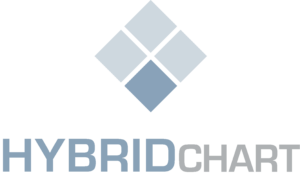Just the thought of change makes us groan. We are fine. Please do not disrupt everything. It is human nature to protect what is perceived to be working. Doctors and medical practices are no different. We know our processes are broken and antiquated. So why not revamp them? Why is it easier to kick the can forward instead of rebuilding? Let’s explore the rationalizations for perpetuating inefficiency versus implementing smarter workflows.
It Hurts Too Much
Tearing down and building back up is painful. When things are humming along, albeit inefficiently, avoiding the anguish and despair becomes the primary motivator. Medical practices are usually built upon historical workflows, often borne out of habit and what seemed to work when the practice was started. Modernizing your practice requires you to take a hard look at what is working and what is not, and then redesigning the process based upon scalability and appropriate use of resources. Sounds easy, right? Normally I would say, “Not so easy,” but in the past 18 months there has been a shift in the attitude towards change. The COVID-19 pandemic has forced businesses, including medical, to rethink processes. Healthcare, often seen as “change averse” has joined the movement to make smart redesign choices. And with one successful shift comes the motivation to clean house.
Fear of Failure
Taking the risk of breaking what is “working” is part of the reason for hesitation. No one wants to be the one at the meeting pushing to revamp an internal process, only for it to fall flat and be on the receiving end of angry partners. The task is sometimes too daunting. If we look at the classic example of hospital rounding as being representative of broken workflows, we see that is an area without infrastructure to help guide processes. In the office, the almost universal implementation of electronic medical records has streamlined in-office patient flow and internal communication. But the hospital rounding experience is the wild west of medicine. No set schedules. Multiple providers coming and going. There is also an inherent disconnect between the office support staff from the front-line workers – the providers. Without a software infrastructure to guide communication and the general workflow, the result is usually resource heavy. So why not change it? Well, it is a delicate balance, and requires getting multiple parties on board: the doctors and APPs, the scheduling staff, and the medical billers. Getting all to agree is perceived to be unlikely, and the fear of failure is high. The right software, however, can unite these teams, giving each their own smart workflow, improving the likelihood of success. So the lesson here is do not try to re-invent it on your own. Instead, turn to workflow experts who have already worked it out, and developed software to make it happen.
The Weakest Link
You know who you are. You are the naysayer. You are the one who will dig in their heels and resist change without the option for negotiation. Every practice has at least one. While the desire to preserve the profession of medicine and the independence that arises from that perspective, this is actually detrimental towards positive change. Again, recent world events and culture shifts in medicine have started to break down the hold-outs. The ability to outright refuse change is becoming less common, knowing that the train will leave the station with or without you. Presenting the skeptics with a solid plan and workflow which have been flushed out and vetted will definitely grease the wheels. Practically speaking, if there is the opportunity for a staged roll-out of a process, try to leave the weakest links until the end. This allows the kinks to be worked out so that by the time it arrives at their doorstep they have less to complain about.
Implementation and Training
Do we need to shut down the office? How many hours of my life am I going to lose on training? Valid questions. Here is where the right software without the implementation backbone to support it is still not a viable option. Getting tools implemented quickly and in an organized fashion is a good reflection on the company you have chosen to help you bring about change. From my perspective, if a product claims to improve workflow efficiency, then the parent company should be super-efficient as well. Training is a workflow in and of itself, so let’s make sure they practice what they preach.
There are countless reasons to procrastinate the redesign of office processes in a medical practice. These barriers are starting to come down, and healthcare professionals are starting to see the value of scalability and better resource allocation. Getting the right team to help you enact these scary evolutions is a good start. Making sure the tool can adapt to your unique way of conducting business is critical. Remember, each successful improvement will make the apprehension towards the next one diminish. You can do it.
https://hybridchart.com/wp-content/uploads/2019/11/HC-Logo-Primary.png
For A Better Hospital Rounding Experience
At HybridChart, we provide technology that connects your healthcare team, increases efficiencies, AND improves your bottom line. HybridChart’s cloud-based software adapts to your practice’s unique workflow and will improve your profitability and patient outcomes by utilizing our 5 features: charge capture, census management, secure messaging, discharge planning, and data analytics.
NEVER miss another charge and get PAID for the work you do!
If you are interested in taking your medical practice to the next level and want to employ the best hospital charge capture practice available in the industry, come visit our website at www.hybridchart.com, call us at 1-877-977-5544, or click here to schedule a demo today!





